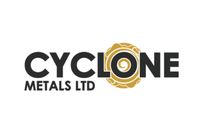Rio Tinto announced its first-half profits have more than doubled to just under $4 billion, which the firm attributes to higher commodity prices.
One of the world’s largest mining companies, Rio Tinto (NYSE:RIO,ASX:RIO), announced its first half (H1) profits have more than doubled to just under $4 billion, which the firm attributes to higher commodity prices.
The firm rewarded its shareholders with a record interim dividend of $1.10 per share equivalent to $2 billion plus an added $1 billion in share buybacks. The results were an improvement from last year’s H1 profits of $1.56 billion and in 2015, when the firm posted its worst earnings in over a decade.
The firm noted that 80 percent of its underlying earnings in H1 came from its iron ore business and higher prices offset lower shipment volumes. The firm said shipments from its Pilbara operations in Australia were 3 percent lower than in H1 2016 due to weather and rail upgrades.
However, iron ore prices have gained and were trading at $72.06 a tonne as of 2pm PDT on August 2. Recently, investment bank Goldman Sachs (NYSE:GS) raised its iron forecast to $70 a tonne from $55 for 2017. Rio Tinto also mentioned that average aluminum prices on the London Metals Exchange (LME) in H1 2017 were 22 percent higher than the same period in 2016.
Despite the increase in iron prices and company profits, Rio Tinto’s stock price was down over 2.38 percent on the NYSE and over 1.81 percent on the ASX. Analysts told Reuters they had hoped for a larger dividend payment instead of a buyback and others “blamed negative sentiment for the sector.” Company Chief Executive Jean-Sebastien Jacques did indicate that additional payouts could be coming “down the track” once Rio Tinto completes the $2.7 billion sale of its Australian thermal coal assets to China’s Yancoal. The deal is expected to close in the third quarter of 2017.
“When we have the cash on the balance sheet we will go through the capital allocation cycle and we will decide as a board what we do with the cash between investing in the long-term, cash returns for shareholders and the strength of the balance sheet,” he said.
Don’t forget to follow us @INN_Resource for real-time news updates!
Securities Disclosure: I, Melissa Shaw, hold no direct investment interest in any company mentioned in this article.
